Those of you who have been here for awhile know that I am all-in on adding scalded flour (also known as a tangzhong or yudane) to my enriched-bread formulas because they make for a soft, fluffy dough that stays that way for a long time. You are probably also aware that I tend to use glutinous (“sweet”) rice flour in my scalds, for two reasons.
One, glutinous rice flour is nearly pure amylopectin, the starch that is least able to retrograde, which makes the loaf less likely to turn stale. Wheat flour—the usual choice for flour scalds—contains a mixture of amylopectin and amylose, the latter of which is much faster to retrograde.
And two, it can be formed easily by simply stirring it together with boiling water. Unlike wheat flour, glutinous rice flour does not clump when combined with boiling water, which avoids having to first mix the flour with cold water and cook the scald on the stovetop. Not only is this easier to do, it is far less messy.
Finally, I feel that if you are going to use a scald, you ought to use as much as possible to maximize the effects it produces, provided it doesn’t compromise the loaf in other ways. Where most tangzhong breads scald a modest amount of flour—5–10%, at most—I always aim for 15-20% myself. (As I said, I am all-in.)
My usual MO for scalded-flour enriched breads is to add cold butter to the just-formed scald, cover the container, and let it sit for an hour or so, which cools down the scald while also softening the butter. Once the hour is up, I mix the dough with all ingredients, including the scald, until a shaggy, partially-developed dough forms, which takes about 8 minutes. I then give the dough an hour or so at room temperature, folding it once or twice, then move it to the fridge until it firms up.
I have used this approach countless times to great effect—for shokupan, challah, choreg, and so on. Deliberately under-developing the dough by adding the fat and the scald at the start of mixing and mixing for a relatively short amount of time compared to other formulas works fine with most doughs, because some of the missing strength and smoothness arises on its own during the bulk fermentation.
I even developed a version of it for a brioche dough (which I shared awhile back on the Breaducation testing group), but I was never totally happy with it, to be honest (nor were a significant number of my testers). It was very good, considering how simple it was to make, but the crumb was finer and the dough a little stickier than I’d like, even after chilling it. This approach works great when the amount of fat in the dough is modest, but once you add the requisite amount of butter for brioche—40% and up—you cannot easily develop enough strength to give an appropriately lofty crumb and avoid keyholing, nor can you avoid a sticky dough.
So I decided to rebuild my brioche approach from the ground up, using the “traditional” method—developing the dough most of the way without the butter, then adding it a little at a time and continuing to mix until the dough is smooth, silky, and strong. It is less straightforward and requires a lot more mixing, but in the end I think the effort is worth it. I don’t make brioche all that often—my “all-purpose” enriched bread formula for pan loaves or buns is usually based on shokupan—so if I am making it, I want it to be special.
Sorting it out took a long time—and a lot of eggs, butter, and sugar—and I eventually found that I had to rethink the formula entirely. When I used anything like the original one—which contained more yolks than whole eggs—and developed it well, the loaves would keyhole significantly after (or even during, ugh) the bake, no matter what I tried to avoid it. This is perhaps the best (worst) example of what I mean:
For a while, I worried that the amount of scalded flour was to blame, but I stubbornly refused to reduce it. I did make numerous improvements in the meantime, starting with switching to whole eggs instead of a mixture of whole eggs and yolks. With brioche, it seems that egg whites supply essential structure in the presence of all the additional fat. When I switched to using whole eggs, the keyholing problem was reduced dramatically. (This also freed me from having to think of things to do with all the unused egg whites that were beginning to accumulate in my fridge, thankfully.)
I also increased the baking temperature from 300-325˚F up to 350˚F, which helped to dry out the crust enough to let it hold itself up once it comes out of the oven. And I learned how to tell when the sidewalls were browned enough, without having to remove the loaf from the pan to see them: Bake the loaf until the seams—the segments of the crust that emerge only during baking, as the dough balls expand—are well-browned. Finally, I started putting the de-panned loaf back into the oven for five minutes to further set the crust.
But the keyholing problem remained intermittently present, and I was ultimately forced to test reduced amounts of scalded flour. As I should have known, that was the problem here. In the end, I reduced it by half, to 10% of the total flour. It’s still a respectable amount, higher than most other tangzhong-style formulas (and way more than most brioches, which usually have none).
And the new formula is definitely a lot loftier and more open-crumbed than the old one. Aside from the appearance and the texture of the loaf, another way this was obvious was that I had to keep scaling it down to make it fit within the same basic dimensions. Ultimately I reduced the dough weight for a 9x4x4-inch loaf by more than 100g (nearly 15%), and even so it is significantly taller than the old one. (The old one barely crested the pan, and this one leaps over the top of the pan by as much as an inch, as you can see in the photos below. It’s a little wild and Seussian-looking, but I kind of like it.)
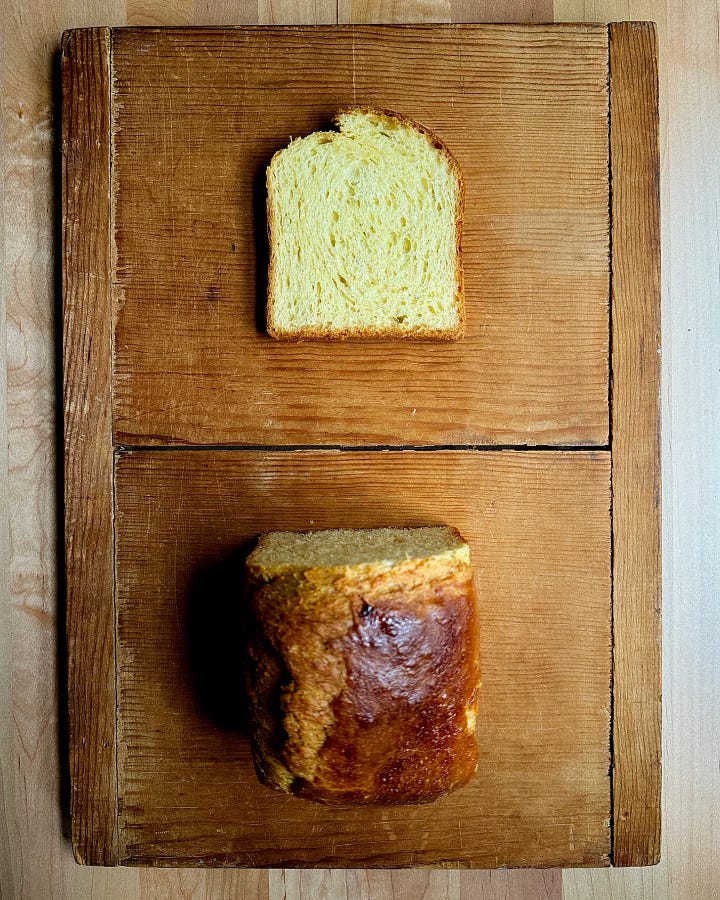
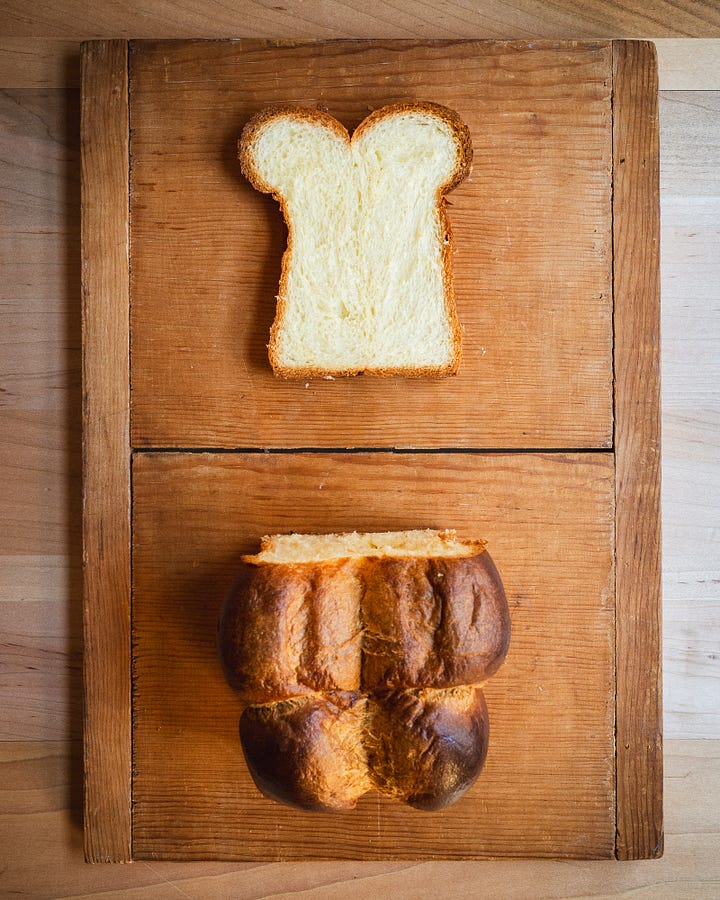
It does take a little more effort to make than my other scalded-flour enriched breads, but I was still able to simplify it compared to most other brioche formulas: Instead of holding back all of the butter until the dough is developed, I add the scald and about a third of the butter up front, which makes for a dough that is soft enough to mix easily, even in a planetary mixer. Once the dough has developed some strength, the rest of the butter gets added cold over the course of five minutes or so. After it is incorporated, it only takes another five minutes to get the dough sufficiently developed.
And even better, as with many brioche recipes, the dough goes into the fridge immediately after mixing, so there’s no minding the dough after that, aside from a single gentle press to degas it after an hour or so. Once chilled (after about 3 hours), the dough can be used immediately, or held for up to at least 24 hours before shaping and baking.
Once I got it to work, I did end up adding back a single extra yolk, because the color of the crumb was paler than I wanted for a brioche. The good news is that you can use the leftover white (along with a little sugar, salt, water, and oil) to wash the loaf, so it’s not wasted.
And I also sorted out a method for substituting whole-rye flour for the glutinous rice flour, which works equally well, once you add a little water.
Now that I have this recipe sorted out, I’m going back to all of the other enriched formulas in the book to see if they cannot be similarly improved, and I’ve already got a really nice challah recipe in the works, which I will also be sharing soon.
So that’s the story behind my new brioche formula. If you want to try it out yourself, you’ll need a Wordloaf paid subscription.
I’ve decided that going forward I am going to put all subsequent Breaducation-intended recipes I share here behind the paywall, at least until the book is in the can. I’m currently scrambling to get the book completed on time, and I need some of the recipes I am working on for the book to serve double duty as “premium” content here. So if you want a preview of these book recipes, you’ll need a paid subscription to access them. (I am going to ask for feedback on specific aspects of the recipes, just to be sure they are foolproof, so thanks in advance for your help!)
Not to worry, everyone else, I’ll still be sharing the same amount of “free” content beyond these recipes, including excerpts from other sections of the book. And for those of you that are members of my Breaducation testing group, also not to worry—I still have loads of recipes to test with you there exclusively.
Stay tuned for the brioche recipe to drop later today.
—Andrew




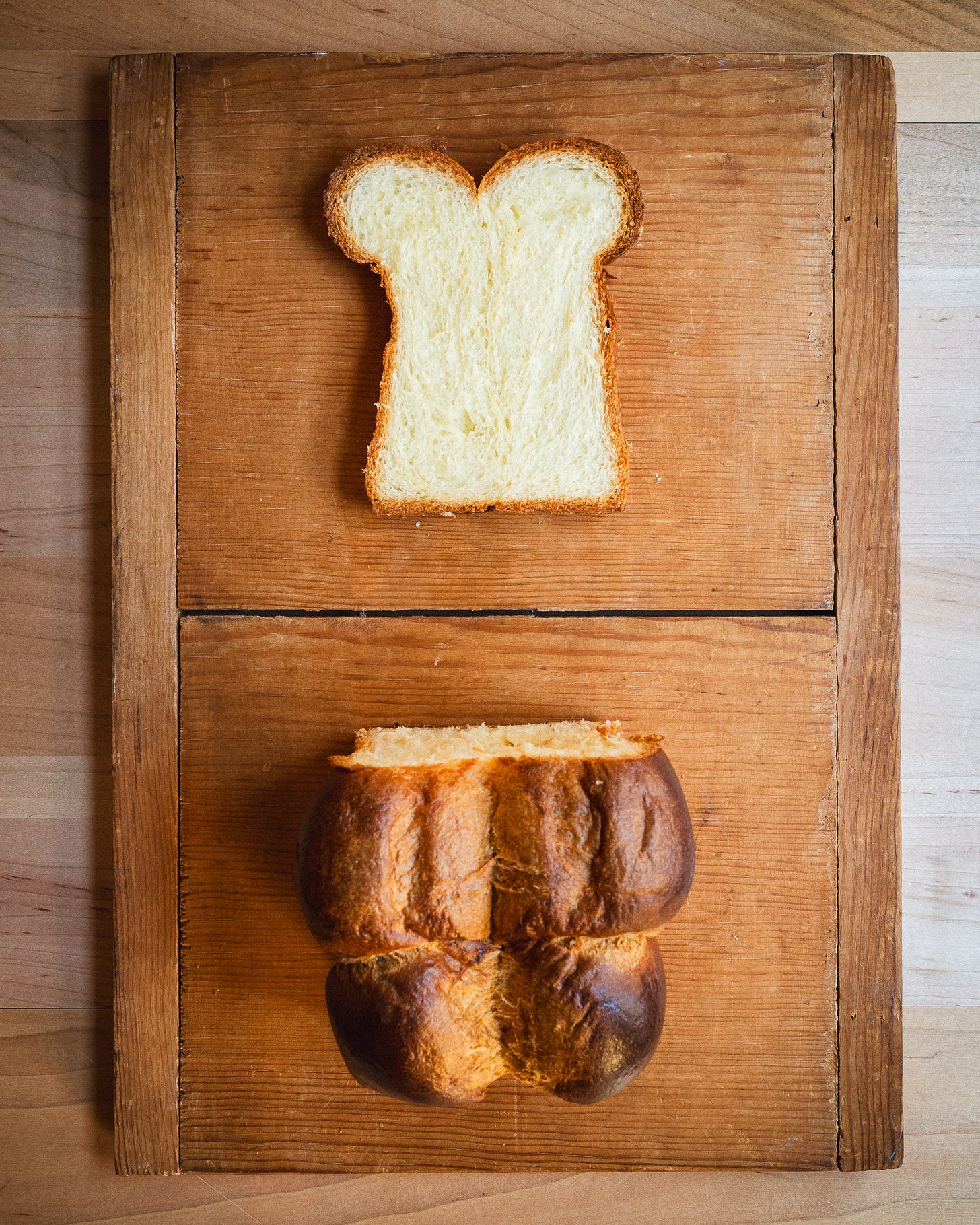
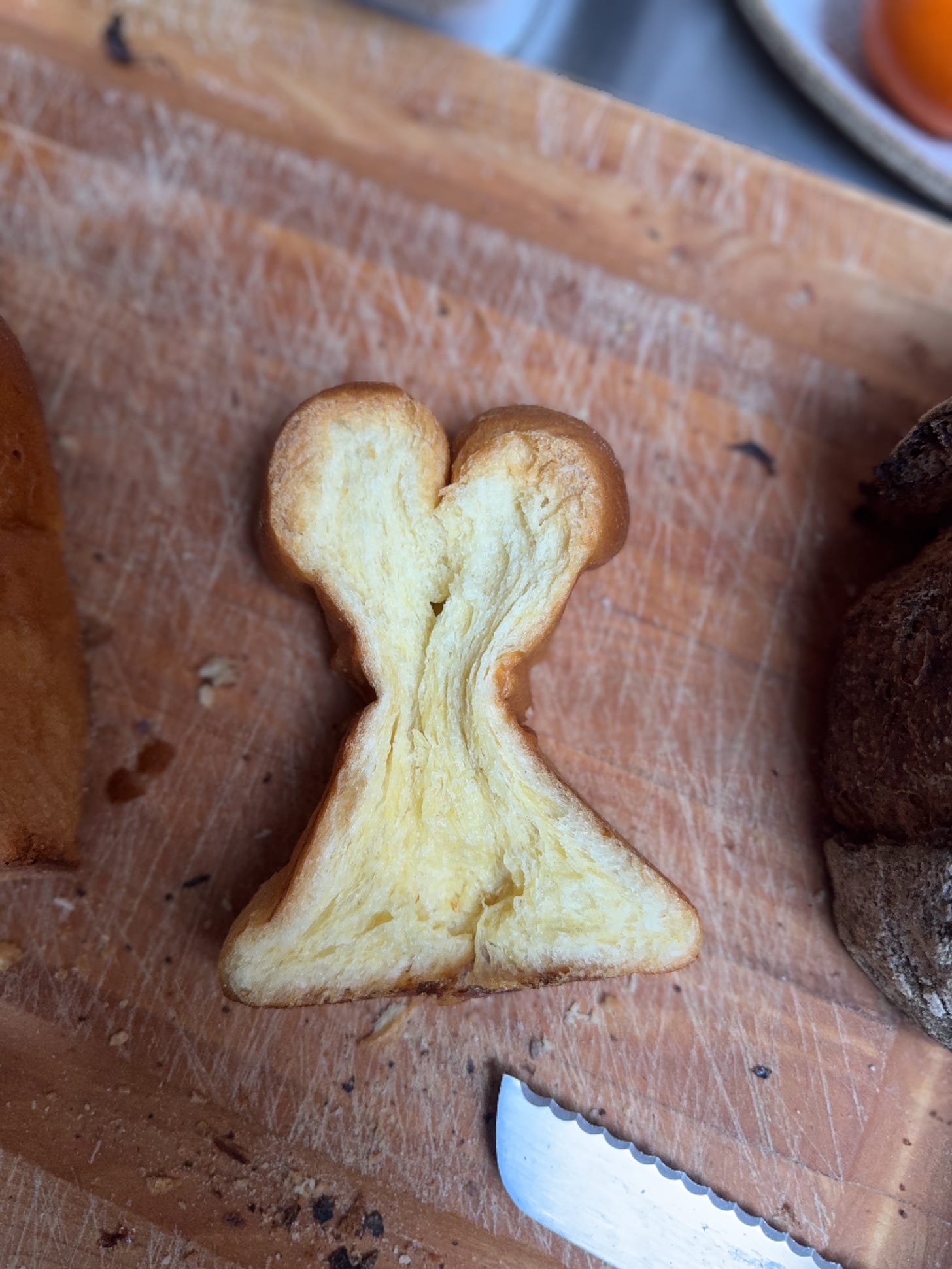
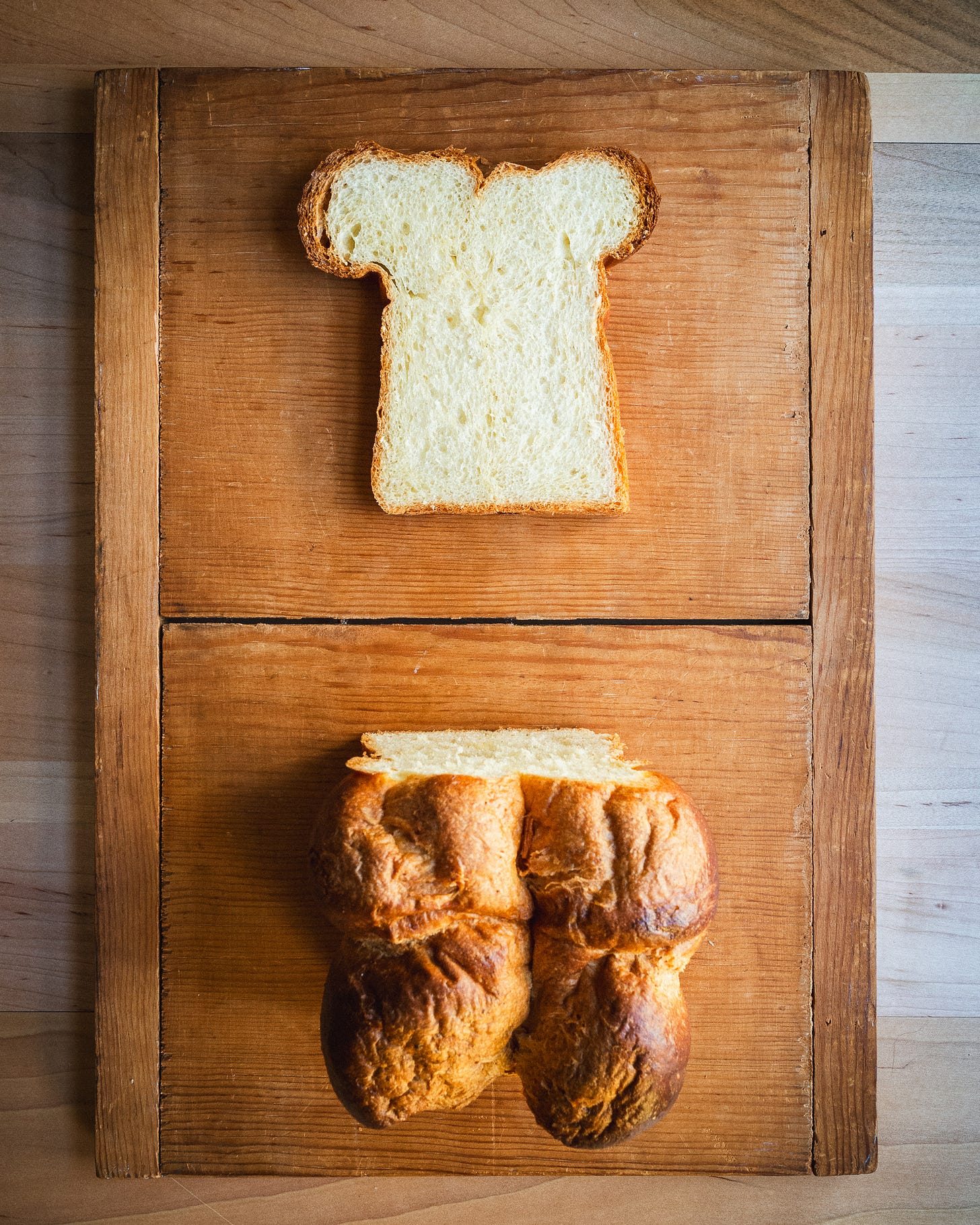
Watching this process (and the many failures) from the sidelines was painful at times, but I admired your tenacity and never doubted you would eventually figure it out.
Billy Bragg. Talking to the Taxman About Poetry. Incredible album, Brunette is a great song. Recognized the reference immediately, wonder who else will? You already rocked in my book, now you just got upgraded. Nice work always.